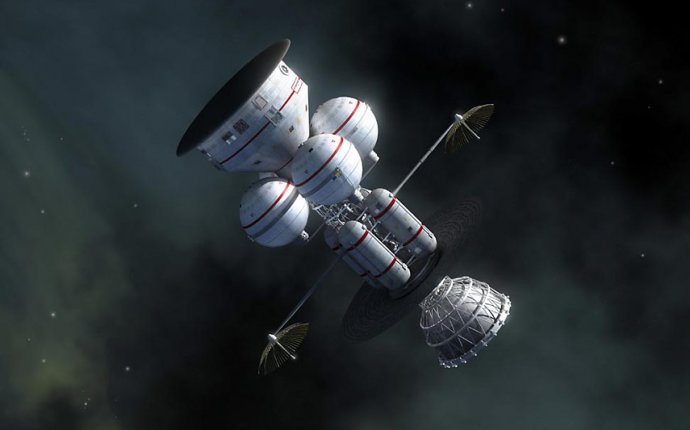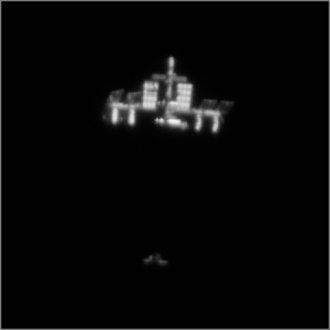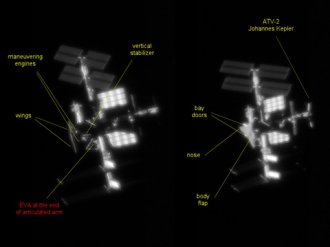
Best way to learn Astronomy
 The International Space Station crosses our skies on a regular basis. Many of us would love to spend time on this early starship as it circles the Earth and studies all that is above and below. But for most of us, all we can do is occasionally watch as it streaks across the sky.
The International Space Station crosses our skies on a regular basis. Many of us would love to spend time on this early starship as it circles the Earth and studies all that is above and below. But for most of us, all we can do is occasionally watch as it streaks across the sky.
But wait a minute? Why settle for a streaking glimmer like just another satellite. The ISS is actually much larger than most satellites and some of us have glimpsed it briefly in our scopes, but usually by accident. Let's go beyond accident to intentional.
The image above shows the ISS and Discovery spacecrafts. It is reproduced with kind permission from Astrophotographer Thierry Legault. Please visit his amazing website for more images.
The ISS can be photographed
People have done it and you can too. But you need to apply some common sense and a new approach to your telescopy. The International Space Station is not like the moon or other celestial objects subject to the gradual rotation of the Earth. It's moving across the sky and it’s moving fast!
 Forget the motor drive
Forget the motor drive
The ISS is moving too fast for most motor drives and the calculations would take you days to estimate. Besides, many motor drives simply won't move fast enough to track it. This is a handheld proposition and you can do it with a traditional reflector or better yet, a Dobsonian scope. Some people have captured a shot with a DSLR camera with a good telephoto, but they've also used some tricks. These include automatic exposures set to repeated shots and not surprisingly, video mode. In fact, the video mode is the best way to capture the ISS but you may only get a frame or two of the actual station. That's okay. That’s the idea.











